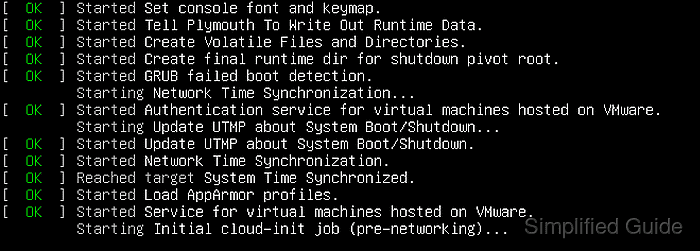Starting important programs automatically during Linux boot keeps services, monitoring agents, and supporting tools available without manual intervention. Consistent autostart behaviour is especially useful on servers, appliances, and remote systems that may reboot without an administrator present, reducing the risk of forgotten processes after maintenance or power events.

In modern environments, the init system systemd orchestrates background services through unit files, while graphical desktops such as GNOME and KDE use their own session managers to start user applications. Additional mechanisms such as the cron daemon, the legacy /etc/rc.local script, and shell initialisation files help schedule one‑shot tasks, boot‑time configuration, or commands tied to interactive logins.
The appropriate mechanism depends on whether a program should run as a long‑lived daemon, a one‑time boot task, or a per‑session application. Misusing login shells or legacy hooks for background services can make troubleshooting harder, and some distributions may disable or omit compatibility layers such as /etc/rc.local. Common options described here cover most scenarios, while distribution documentation remains the final reference for edge cases.
Related: How to autostart programs in GNOME startup
Related: How to automatically run program on KDE startup
Methods to automatically run program on Linux startup:
Running a program automatically on Linux startup via systemd:
Modern Linux distributions primarily use systemd to manage services during boot. systemd handles various system processes and can be configured to autostart programs using service unit files. This method is recommended for most users because of its flexibility and widespread support.
To use systemd, the program that should start at boot needs an associated service unit file. If it does not, a custom one can be created under /etc/systemd/system or a similar directory. The steps below show how to enable an existing program to start automatically using systemd.
- Check if the service unit for the program exists (optional).
$ systemctl list-unit-files --type=service UNIT FILE STATE PRESET apt-daily-upgrade.service static - apt-daily.service static - autovt@.service alias - console-getty.service enabled-runtime disabled cron.service enabled enabled demo-startup.service disabled enabled dmesg.service enabled enabled ##### snipped ##### x11-common.service masked enabled 158 unit files listed.
A custom service unit is required for in‑house programs or software that does not ship one with the package.
Related: Creating and modifying systemd unit files - Check if the service unit is enabled (optional).
$ systemctl is-enabled demo-startup disabled
A unit in the enabled state is started automatically during boot according to its target.
- Enable the service unit to execute during startup.
$ sudo systemctl enable demo-startup Created symlink /etc/systemd/system/multi-user.target.wants/demo-startup.service → /etc/systemd/system/demo-startup.service.
- Confirm that the service unit is enabled (optional).
$ systemctl is-enabled demo-startup enabled
Use systemctl status <unit> to inspect runtime state once the system has booted.
Running a program automatically on Linux startup via cron:
The cron daemon schedules recurring or one‑off tasks in Linux. It can start programs at specific times, including during system startup, using per‑user or system‑wide configuration. cron jobs are well suited to lightweight scripts or commands that do not need full service management from systemd.
Using cron to autostart a program involves adding an entry to the user’s crontab file. This method is helpful for running a command as a particular user immediately after boot without creating a dedicated systemd unit.
- Open the crontab editor.
$ crontab -e No modification made
The first invocation prompts for an editor selection, and a new crontab is created for the calling user.
The resulting crontab runs with the privileges of the user who created it; to run as root, invoke crontab -e as the root account.
- Insert a line starting with @reboot.
# m h dom mon dow command @reboot
The @reboot keyword marks jobs that run once at boot, after the cron daemon has started.
- Add the command to start the program after @reboot.
@reboot /usr/bin/logger -t boot-demo "boot demo"
Use full paths to binaries and keep the command on a single line to avoid parsing issues.
- Save the crontab file.
$ crontab -e crontab: installing new crontab $
Per‑user crontab files are stored under /var/spool/cron or /var/spool/cron/crontabs depending on the distribution.
- Verify proper crontab configuration (optional).
$ crontab -l # m h dom mon dow command @reboot /usr/bin/logger -t boot-demo "boot demo"
Running a program automatically on Linux startup via rc.local:
rc.local is a legacy script traditionally used to execute commands during system startup. Although it is not enabled by default on all modern systemd‑based systems, many installations retain compatibility to ease migration from older init systems. The script executes near the end of the boot sequence.
Because /etc/rc.local runs with root privileges, any commands placed in it can modify system state without further authentication. Only trusted commands and scripts should be added, and changes should be kept small and auditable.
- As the root user, open or create the /etc/rc.local file using a preferred editor if it does not exist.
$ sudo vi /etc/rc.local
- Add placeholder code to the file.
#!/bin/bash exit 0
The script should start with a valid interpreter such as /bin/bash and terminate with an exit status, where 0 indicates success.
- Insert commands and logic as needed.
#!/bin/bash /sbin/ip addr | grep inet\ | tail -n1 | awk '{ print $2 }' > /etc/issue echo "" >> /etc/issue exit 0 - Set the file to executable.
$ sudo chmod a+x /etc/rc.local
When enabled by the distribution, /etc/rc.local is executed once as root near the end of the boot process.
Running a program automatically on GNOME startup
GNOME is a popular desktop environment for Linux, used by distributions such as Ubuntu and Red Hat Enterprise Linux. Autostarting programs in GNOME relies on the desktop session manager, which loads per‑user configuration at login and launches graphical applications in the user context.
Using the dedicated startup‑applications mechanism avoids manual edits to low‑level files and keeps user applications separate from system services. This approach is convenient for mail clients, chat applications, and other desktop tools that should appear automatically after login without affecting system boot.
Running a program automatically on KDE startup:
KDE is another widely used desktop environment in Linux, known for extensive customisation options. Its session manager offers built‑in controls for managing startup applications, including both scripts and graphical programs.
Configuring autostart within KDE System Settings keeps user applications logically grouped with the desktop profile. This arrangement is suitable for tools that should start whenever a user logs in to a KDE session without running as system‑wide daemons.
Running a program automatically on new Bash session:
When a terminal emulator or virtual console is opened, a new shell process is created. On most Linux distributions, Bash acts as the default shell and reads a sequence of startup files in order:
/etc/profile ~/.bash_profile ~/.bash_login ~/.profile
These files contain Bash commands that configure environment variables, aliases, and other session‑specific settings. Many systems also source additional files such as /etc/bash.bashrc and ~/.bashrc from these initial scripts, providing convenient hooks for per‑user customisation.
A program that should run on every interactive Bash session can be invoked from one of these files, typically ~/.bashrc or ~/.profile, depending on distribution defaults and whether the session is login or non‑login.
PS1='${debian_chroot:+($debian_chroot)}$begin:math:display$\\033\[01\;32m$end:math:display$\u@\h$begin:math:display$\\033\[00m$end:math:display$:$begin:math:display$\\033\[01\;34m$end:math:display$\w$begin:math:display$\\033\[00m$end:math:display$ \$ ' PATH=/home/opsuser/bin:$PATH export EDITOR=/usr/bin/vim alias ll="ls -l"
- Open the per‑user ~/.bashrc file in a text editor.
$ vi ~/.bashrc
- Append a command near the end of the file to start the required program for each interactive shell.
my_program &
Launching long‑running daemons or GUI applications from ~/.bashrc affects every interactive terminal and can make failures harder to diagnose.
- Reload the configuration in the current shell to test the change.
$ . ~/.bashrc
The dot command executes ~/.bashrc in the current shell so that new settings and commands take effect immediately.
- Open a new terminal session and confirm that the program starts automatically.
For login shells that do not source ~/.bashrc directly, the distribution may chain login files to include it.

Mohd Shakir Zakaria is a cloud architect with deep roots in software development and open-source advocacy. Certified in AWS, Red Hat, VMware, ITIL, and Linux, he specializes in designing and managing robust cloud and on-premises infrastructures.
Comment anonymously. Login not required.
